Callisaurus draconoides
—
Zebra-tailed Lizard
Also known as:
Zebratail Lizard, Gridiron-tailed Lizard
Subspecies I've seen:
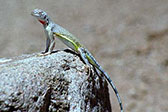
C. d. rhodostictus
Western Zebra-tailed Lizard
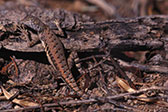
C. d. ventralis
Eastern Zebra-tailed Lizard
Callisaurus draconoides rhodostictus
—
Western Zebra-tailed Lizard

Zebra-tailed lizards are the fastest lizards in the desert. They have an odd habit of curling their tail over their back, thus revealing the striping, and then waving it slowly from side to side. The most widely accepted theory is that this lulls their predators like a hypnotist's watch, which prevents them from reacting quickly when the zebra-tailed lizard suddently zips away.
Schoenherr points out that the zebra-tailed lizard is one of the few species where the female (shown here, identifiable by the lack of side stripes) displays breeding colors.
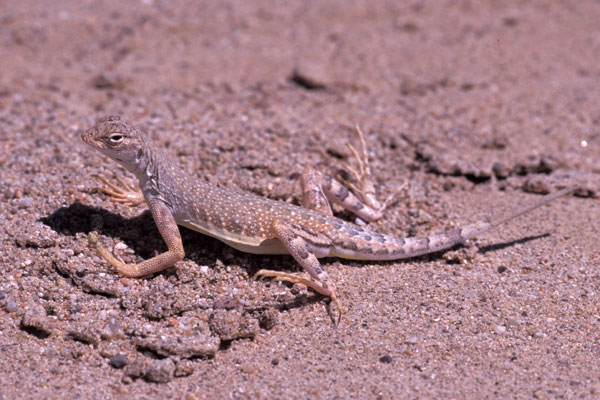
The sandy washes of Red Rock Canyon State Park were filled with zebra-tailed lizards racing to and fro. This is an adult female with a regenerated tail. She's keeping her toes and tail off the hot hot ground.

I discovered on this morning that even in the hottest part of the summer, the desert lizards don't awake until the sun has been out for awhile. The whiptails awoke first, around 7:00 a.m., followed by the side-blotched lizards around 7:45 and these zebra-tailed lizards around 9:00.
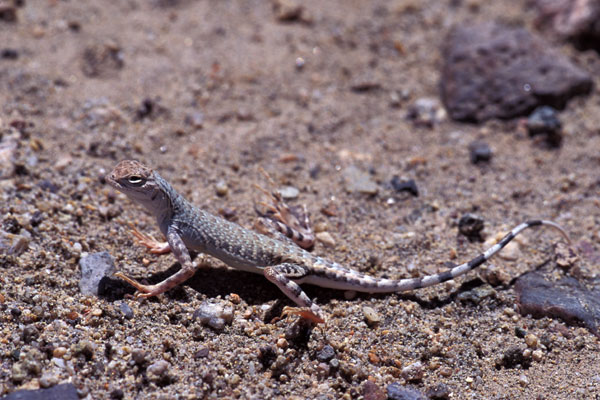
Here's another youngster keeping its toes from getting too hot.

This zebra-tailed lizard didn't mind a summer heatwave. With daytime temperatures in the low 100's, most of the desert wildlife (even most of the lizards) were avoiding the direct sunlight. But not this fellow, who was standing warily in the middle of a dirt road.
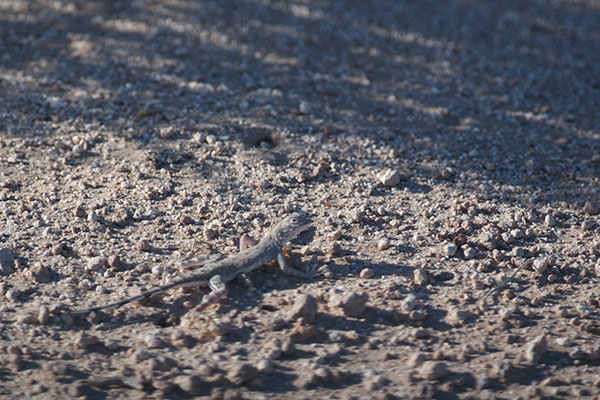
As I was driving back down the dirt road from whence I had come, after a successful quest for both Goode's Horned Lizards and Yuman Desert Fringe-toed Lizards, this tiny lizard's movement caught my eye. I managed to get this one crappy photo from the car before it took off at a crazy speed as any self-respecting zebra-tailed lizard is wont to do. I was surprised to see only this one zebra-tail in the two drives I took out to this area, since they are typically quite common where they are present.
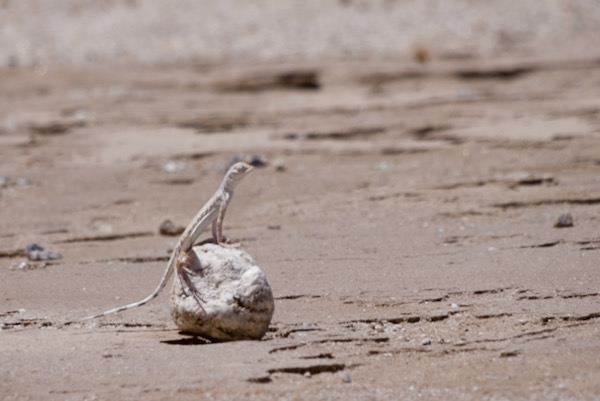
This photo deserves a funnier caption than I can currently think of.
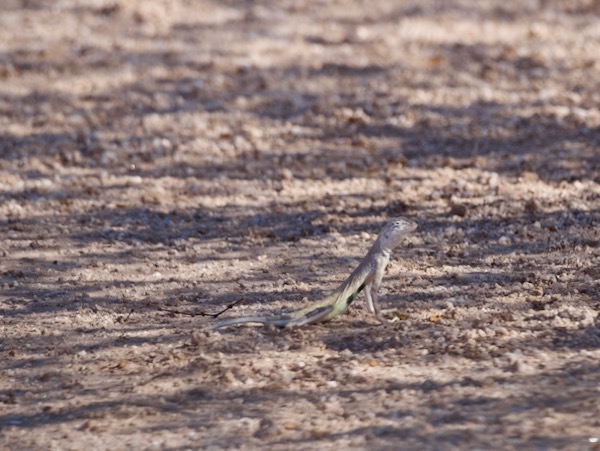
Another trip to Mohawk Dunes, another single zebra-tailed lizard. At least this one held still for a photo.
Callisaurus draconoides ventralis
—
Eastern Zebra-tailed Lizard


These little speed demons were zipping all around the washes and other open areas on the desert floor. Most of them were young, like these two, but we did see a few adults. Note how their color blends almost perfectly with the gravel and sand they hang out on.
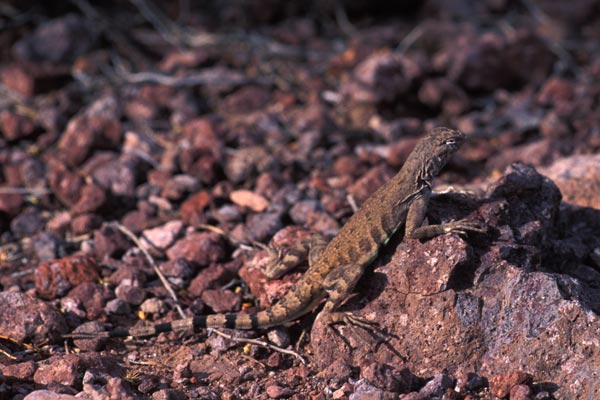
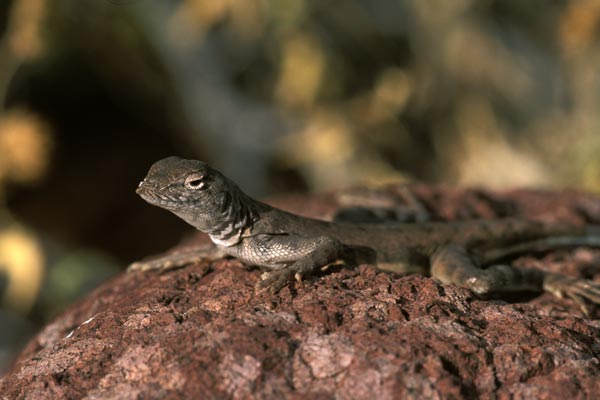
As usual, zebra-tailed lizards were plentiful in the desert. Most of them raced off long before I could get a close-up shot, but the second one pictured here was unusually unafraid.
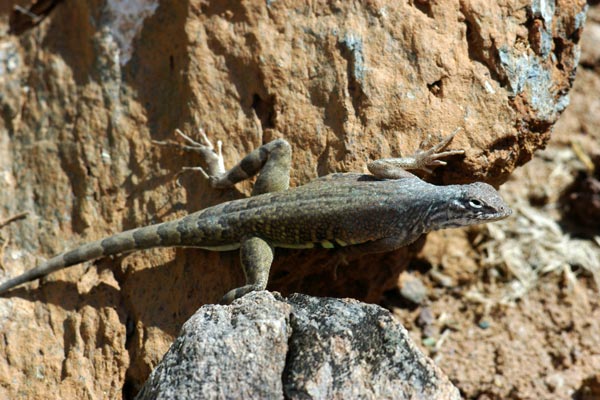
This adult zebra-tailed lizard is giving me the evil eye as I point my camera in its direction.
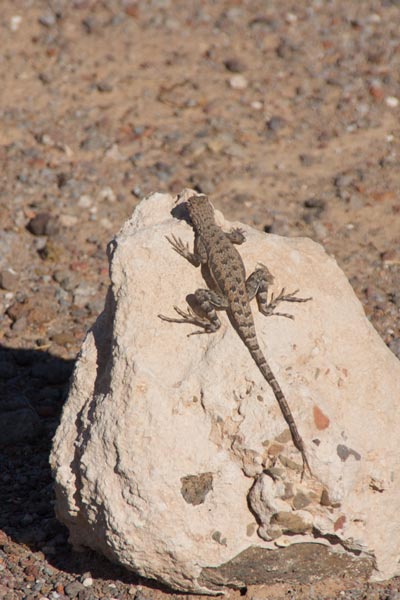
As we walked our dogs in the morning around the immense Coyote Howls campground, the local lizards began to come out for their morning basks. First there were the usual batch of Side-blotched Lizards and the similarly small Ornate Tree Lizards. Next came the slightly larger Zebra-tailed Lizards, and a little later still, the one, the mighty, Super Spiny Lizard.

That squint means "you might think you can catch me, but you are *so* wrong".
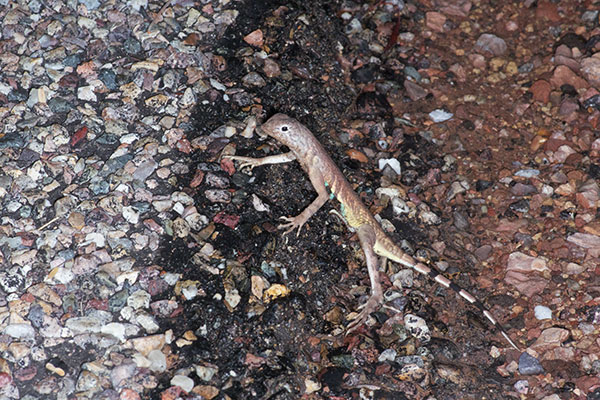
I was out looking for toads and snakes about an hour after dark when a light-colored blotch caught my eye just as I passed it. "Hmm, was that a lizard?", thought I to myself. I assumed it must be a banded gecko, since that was the only nocturnal lizard found in the area. I backed up to get a second look, and was surprised to see this zebra-tailed lizard run across to the edge of the road. "What is it doing out so late?", thought I to myself. (Thigmothermy, perhaps.)
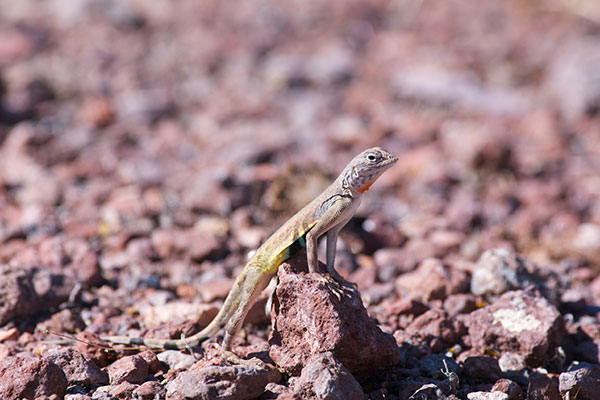
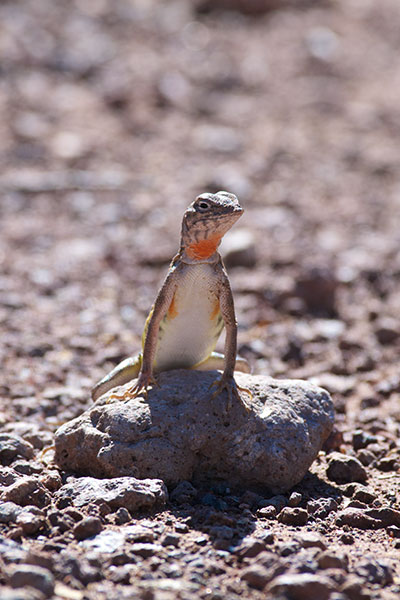
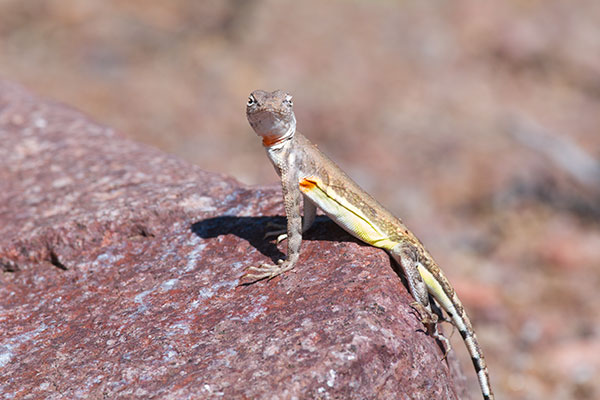
Ah, the pleasures of the early morning sun on your back!
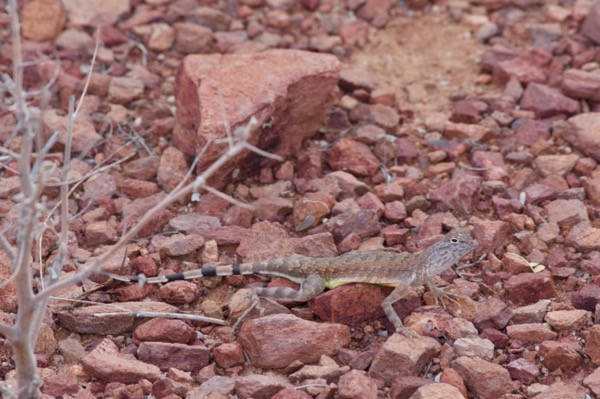
This was your basic medium-sized, not particularly colorful zebra-tailed lizard. Nothing exciting, but it was the first one on this trip to Mexico that sat still for long enough for me to get a photo.
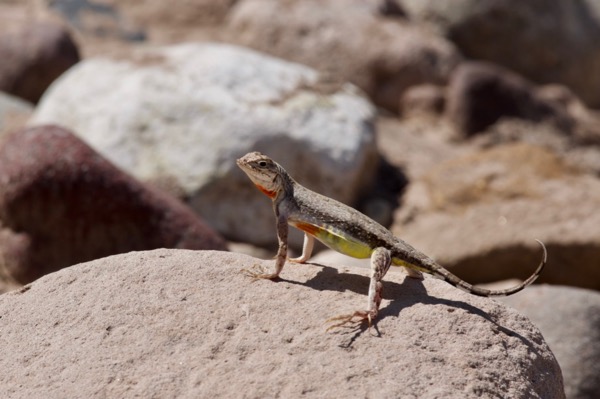
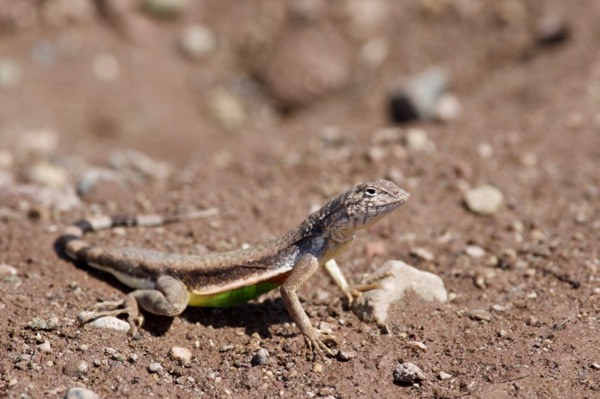
Numerous oh-so-proud zebra-tailed lizards festooned the sandy shores and rocky washes around the Cuchujaqui river.
Printed references:
- Behler, J. L., King, F. W. 1979. The Audubon Society Field Guide to North American Reptiles & Amphibians
- Brennan, T. C. and Holycross, A. T. 2006. A Field Guide to Amphibians and Reptiles in Arizona
- Brennan, T. C. and Holycross, A. T. 2005. A Field Guide to Amphibians and Reptiles of Maricopa County
- Crother, B. I. (ed.) 2017. Scientific and Standard English Names of Amphibians and Reptiles of North America North of Mexico, with Comments Regarding Confidence in Our Understanding, Eighth Edition
- Degenhardt, W. G., Painter, C. W., Price, A. H. 1996. Amphibians & Reptiles of New Mexico
- Hanson, J., Hanson, R. B. 1997. 50 Common Reptiles & Amphibians of the Southwest
- Jones, L. L. C., Lovich, R. E. 2009. Lizards of the American Southwest: A Photographic Field Guide
- Miller, A. H., Stebbins, R. C. 1973. The Lives of Desert Animals in Joshua Tree National Monument
- Monday, D.C., Dobolek, R. 1999. Arizona Wildlife Views, Special Edition
- Rogner, M. 1997. Lizards
- Sanborn, S. R. 1994. The Lizard-Watching Guide
- Schoenherr, A. A. 1992. A Natural History of California
- Smith, H. M. 1995. Handbook of Lizards: Lizards of the United States and Canada
- Smith, H. M., Brodie, E. D. Jr. 1982. Reptiles of North America: A Guide to Field Identification
- Stebbins, R. C. 2003. Peterson Field Guide to Western Reptiles and Amphibians, Third Edition
- Stoops, E. D., Wright, A. 1997. Snakes and other Reptiles of the Southwest, 4th Edition